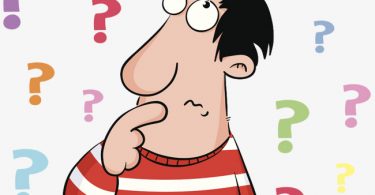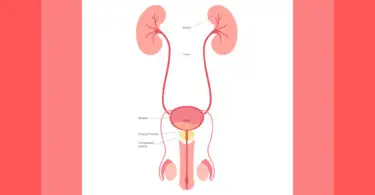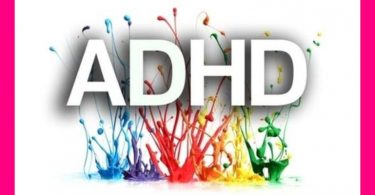“One of the first duties of the physician
is to educate the masses not to take medicine.”
~William Osler MD 1849-1919
The year 2008 marked the 90th anniversary of the 1918 influenza pandemic, one of the greatest infectious calamities in human history. Pandemics – epidemics so large they envelop the entire world – have appeared several times in recent centuries. But in this case, 50-100 million people died, with 500,000 – 675,000 in the United States alone.i Extremely virulent, this influenza killed people in the prime of their lives very quickly.
Recent spread of H5N1 avian influenza viruses through Asia, the Middle East, Europe, and Africa raises wariness about another pandemic.ii Genetic sequencing of the 1918 virus from victims’ frozen lung tissue shows that it, too, was an avian one
(H1N1)iii, iv . Although wild migratory waterfowl serve as reservoirs, many feel H5N1 actually spreads through movement of domestic poultry, poultry products, or infected material from poultry farms.v However it travels, H5N1 has been getting enough air miles to be alarming.
Preparing for a pandemic generates many concerns, with probable shortages of antiviral medicines and ventilators leading the list. Despite rapid need in a pandemic, vaccines require 4-6 months to make.vi Non-pharmaceutical interventions such as isolation of ill people, quarantine of those having contact with them, school and selected business closure, and cancellation of public gatherings can limit spread.vii But these alone cannot stop a pandemic.
In light of these worries, we physicians might benefit from exploring all possible treatment approaches. Classical (single remedy) homeopathy, a controversial 200-year-old system of medicine developed by Samuel Hahnemann MD, was one of the treatments used during the 1918 influenza pandemic. Few people might realize, that although seeing equally ill patients, homeopathic physicians had much less patient mortality than their allopathic counterpartsviii. For instance, one series of 26,795 cases of influenza treated by homeopathic physicians showed a mortality rate of 1.05%, while that of the average conventional school was ~30%.8 Another collection of 6602 cases treated homeopathically had only 55 deaths, showing a mortality rate of .8%.8
Although a current Medline search yields 470 papers about the 1918 pandemic, none of them mentions homeopathy’s role in patient care. This omission seems less surprising in light of recent research documenting the example of desired “positive” antidepressant trials being selectively published in medical journals.ix Nevertheless, homeopathic medical journals did exist during this time, recording clinical material as above.
When the pandemic struck Philadelphia in 1918, Isaac Starr MD was a 3rd year student at University of Pennsylvania School of Medicine. In an essayx describing his experiences tending patients, Starr noted that they often presented with fever alone but deteriorated drastically.
“As their lungs filled with rales the patients became short of breath and increasingly cyanotic. After gasping for several hours they became delirious and incontinent, and many died struggling to clear their airways of a blood-tinged froth that sometimes gushed from their nose and mouth. It was a dreadful business.”9
Other symptoms included nausea with profuse watery diarrhea, intense muscle and joint aches, general malaise, and hemorrhages from nose and mouth. Disparity between pulse and temperature (high temperature with slow pulse, or vice versa) was often noted. Victims would turn a purplish, grayish, or “strange shade of heliotrope” hue, leading some to call this influenza the “Purple Plague” or “Purple Death.” xi A particularly ominous sign was bilateral ptosis of the eyelids. Many, such as William Osler MD, developed fatal bacterial pneumonias; this and an ensuing empyema caused Dr. Osler’s death.xii More recent research indicates that patients may have experienced “cytokine storms” with severe dysregulation of immune response, leading to total systemic collapse.2 Starr writes that “the deaths in the hospital as a whole exceeded 25% per night during the peak of the epidemic.” 9
Conventional allopathic treatments for this illness included atropine, injections of camphor in oil, “applications of guaiac”9, cupping, large doses of aspirin, quinine, “imperial powders” (a mixture of potassium bitartrate, sodium citrate, and sugar), castor oil, digitalis, and heroin for cough and insomnia.10
In contrast, classical homeopaths treated patients by observing their symptoms, and matching these as closely as possible to indicated homeopathic remedies.xiii The very name “homeopathy”, means “similar suffering”. Homeopathy holds that a substance causing certain symptoms in an overdose can cure someone ill with these symptoms when given in a precisely diluted and succussed (shaken) form. This is said to stimulate the body’s self-regulatory systems in a very specific way, throwing off the illness causing the symptoms.
Gelsemium and Bryonia were the two most common homeopathic remedies used during the 1918 pandemic. Gelsemium sempervirens (false jasmine) comes from the Loganiaceae family of evergreen twining shrubs; Bryonia alba (white bryony) belongs to the Cucurbitaceae (gourd) family. Symptoms corresponding to Gelsemium include extreme muscle weakness and trembling, body aches, feelings of incredible fatigue, heaviness, and apathy, and eyes that can hardly stay open. The person almost always has a severe, throbbing headache that is relieved by urinating; also, there are cold shivers running up and down the back. With a puffy, red, and congested throat, the patient is often thirstless. Patients needing Bryonia also have intense body aches, and they are immensely disturbed by movement – even moving their eyes. Oddly, they feel better with steady pressure on the painful part, such as wearing a bandage on their aching head. They are very irritable, wanting to be left alone in quiet. With dry mucous membranes, dry cough, and dry mouth, they are very thirsty (unlike Gelsemium’s thirstlessness). Another peculiar feature of Bryonia is desire for cold drinks during chills.
Homeopathic physicians also used other remedies such as Phosphorus, known for its usefulness in hemorrhages, sudden prostration, and dry, hacking cough with illness going quickly to the chest. Belladonna (sudden onset; high fever; red, flushed face, throbbing headache; and dilated pupils) and Baptisia (stuporous patients with putrid, offensive mouth, stool, and perspiration odors) came in handy as well.
Besides addressing symptom pictures with appropriate homeopathic remedies, classical homeopaths differed from their allopathic counterparts by refusing to use aspirin. Many homeopaths felt this drug, which was fairly new at the time, worsened patients’ illnesses. As Frank Newton MD of Somerville MA noted, “aspirin was taken until it caused prostration and the patient developed pneumonia.” 8 Doses of aspirin ranged from 5-10 grains (64.7 mg/grain) and often more every 3 hours; today’s physicians recognize potential toxicity in such amounts. Also, physicians of that era did not know about Reye’s Syndrome, a catastrophic neurological and hepatic deterioration more common when aspirin is used in influenza. It can occur even in adults.xiv Other potentially problematic medications included opium, coal tar derivatives, digitalis in high doses, and quinine.
Despite dire circumstances, human prejudice remained intact; this could also have affected the care patients received. For example, in “Homeopathy in Influenza – A Chorus of Fifty in Harmony,” 8 W. F. Edmundson MD of Pittsburgh reported:
“One physician in a Pittsburgh hospital asked a nurse if she knew anything better than what he was doing, because he was losing so many cases. ‘Yes, Doctor, stop Aspirin and go down to a homeopathic pharmacy, and get homeopathic remedies.’ The Doctor replied: ‘But that is Homeopathy.’ ‘I know it, but the homeopathic doctors for whom I have nursed have not lost a single case.” 8
Might a confluence of medical efforts improve patient outcomes in a future pandemic? Homeopathy is a low cost, low risk, accessible form of treatment that could benefit many in such a crisis. Also, influenza symptoms are often dramatic and fairly easy to characterize. In an epidemic, a handful of homeopathic remedies tends to emerge as frequently useful in a given geographic area. These remedies become known as the “genus epidemicus” for a given outbreak, and can sometimes be used preventively.xv Dr. Hahnemann did this with an epidemic of scarlet fever whose symptoms corresponded to Belladonna; all children receiving a very small dose of Belladonna early enough remained free of this highly contagious illness.xvi Oscillococcinumxvii, xviii is a homeopathic remedy that may decrease the intensity of — and recovery time from — influenza, even though not preventing it altogether. Another possible preventive is Influenzinum, a homeopathic remedy made from each year’s current flu vaccine. 15 However, efficacy might not carry over to an emerging pandemic influenza strain.
Lessons from the 1918 “Mother of all Pandemics”xix may serve all of us in caring for our patients – especially if H5N1 influenza knocks on our door. Those interested in learning more may contact American Medical College of Homeopathy in Phoenix (www.amcofh.org) for information about live and distance learning courses in acute homeopathic prescribing.
i Hatchett RH, Mecher CE, and Lipsitch M: Public health interventions and epidemic intensity during the 1918 influenza pandemic. Proc Natl Acad SciUSA 2007 May 1; 104(18):7582-7. Epub 2007 Apr 6.
ii Morens DM and Fauci AS: The 1918 influenza pandemic: insights for the 21st century. JID 2007; 195:1018-28.
iii Taubenberger JK et al. Initial genetic characterization of the 1918 “Spanish” influenza virus. Science 1997; 275:1793-6.
iv Taubenberger JK et al. Characterization of the 1918 influenza polymerase genes. Nature 2005; 437:889-93.
v Writing Committee of the Second World Health Organization Consultation on Clinical Aspects of Human Infection with Avian Influenza A (H5N1) Virus. Update on avian influenza A (H5N1) virus infection in humans. N Engl J Med. 2008; 358:261-73.
vi Morse SS. Pandemic influenza: studying the lessons of history. Proc Natl Acad of Sci USA. 2007 May 1; 104(18):7313-14.
vii Markel H et al. Nonpharmaceutical interventions implemented by US cities during the 1918-1919 influenza pandemic. JAMA. 2007; 298(6):644-654.
viii Dewey WA. Homeopathy in influenza: a chorus of fifty in harmony. Journal of the American Institute of Homeopathy. May 1921;13:1038-1048.
ix Turner EH. Selective publication of antidepressant trials and its influence on apparent efficacy. New Engl J Med. 2008; 358:252-60.
x Starr I. Influenza in 1918: recollections of the epidemic in Philadelphia. Ann Intern Med. 2006;145:138-140.
xi Perko S. The homeopathic treatment of influenza. San Antonio: Benchmark Homeopathic Publications; 2005:22-28.
xii Wooley CF. ‘Tell Brother Regius . . .’ Clifford Allbutt’s correspondence with Archibald Malloch during Osler’s final illness. J Med Biogr. 1 Jan 2007; 15 Suppl 1:32-8.
xiii Wheeler CE. A discussion on the treatment of influenza and its complications as seen in the present epidemic. British Homeopathic Journal. December 1918; Vol. VIII(12):305-312 and 5-12.
xiv Kirkpatrick DB et al. Reye’s Syndrome in an adult patient. West J Med. 1986 Feb; 144:223-225.
xv Neustaedter R. Homeopathy and the flu: a proven track record against the flu; what homeopathy can do for you. Homeopathy Today. 2004;24(9):16-18.
xvi Hahnemann S. Organon of the Medical Art (1843), 6th edition. Edited by O’Reilly WB, translated by Decker S. Redmond, WA, Birdcage Books. 1996.
xvii Papp R et al. Oscillococcinum in patients with influenza-like syndromes: a placebo-controlled double-blind evaluation. British Homeopathic Journal. April 1998; 87:69-76.
xviii Ferley JP. A controlled evaluation of a homeoeopathic preparation in the treatment of influenza-like syndromes. Br J Clin Pharmac 1989;27:329-335.
xix Taubenberger JK and Morens DM. 1918 influenza: the mother of all pandemics. Emerging Infectious Diseases. www.cdc.gov/eid. Jan 2006; 12(1): 15-22.





